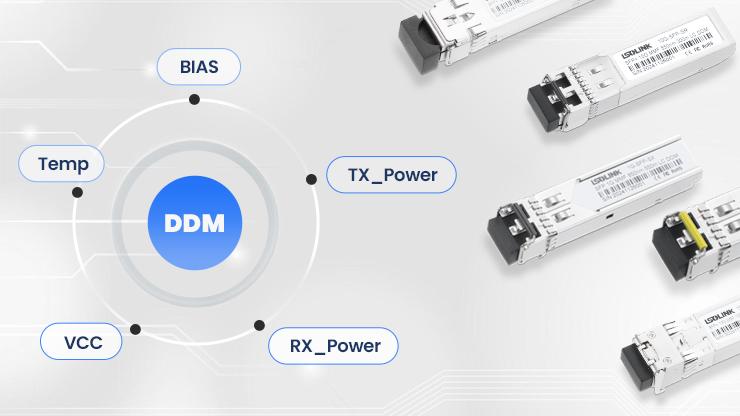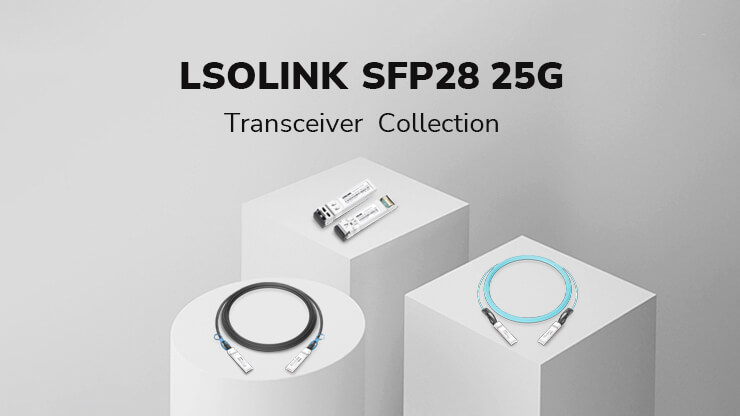Introduction: 100G QSFP28 Optical Module – ‘Invisible Courier’ in the Data World
If we have something to send to a faraway place, the first thing that comes to mind is definitely the courier, and in the optical communication sfp module also plays the role of the courier, the packaged data sent to the hands of the user in a faraway place, the bandwidth of the optical module is equivalent to the courier’s shipping efficiency, the larger the bandwidth, the higher the efficiency!
For traditional data centres, the amount of computation is small, the burst traffic is not high, 25G bandwidth can run full of the required services and there is redundancy, but with the arrival of the AI era, 25G network can no longer meet the high speed of high-performance computing network, large burst traffic demand, taking into account the performance and cost of the 100G QSFP28 optical module into the people’s eyes, today, 100G QSFP28 optical modules have become the backbone of the data centre. In this article, let’s take a detailed look at the 100G QSFP28 optical module and explore its future technical direction and development.
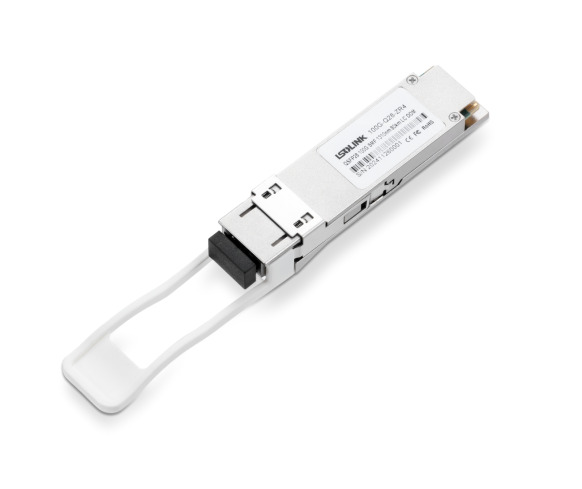
What is 100G QSFP28 Optical Module?
Definition of 100G QSFP28 Optical Module
100G QSFP28 Optical Module refers to the QSFP28 (four-channel small pluggable) package, supporting 100Gbps rate optical module, each channel supports 25G rate, using NRZ modulation, the four channels together to provide a total rate of 100G. Of course, with the development and progress of technology, the current 100G single-channel QSFP28 module technology has also matured and large-scale commercial, 100G single-channel QSFP28 module has only one optical channel, transmitting all the way to the 100G rate, the use of PAM4 modulation, which allows us to have a richer choice of products.
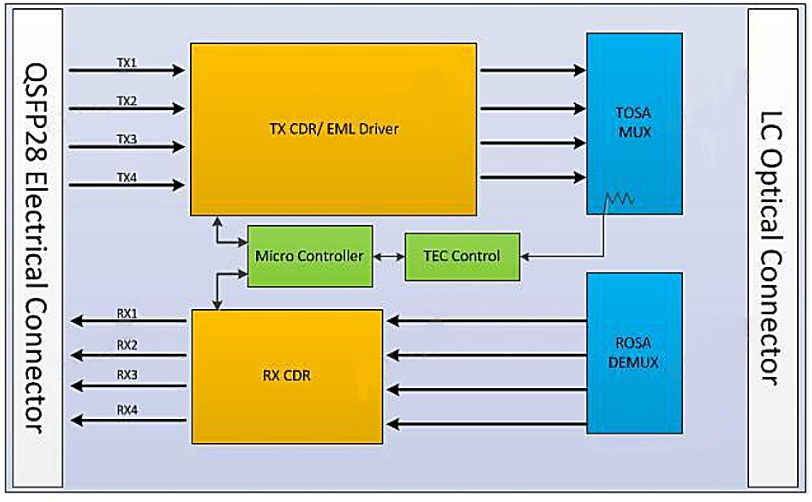
100G QSFP28 Optical Module the Most Common Types of Mode
| Model | 100G-Q28-SR4 | 100G-Q28-CWDM4 | 100G-Q28-LR4 | 100G-Q28-DR |
| Data rate | 103.125Gbps | 103.125Gbps | 103.125Gbps | 106.25Gbps |
| Transmission distance | 100m | 2KM | 10KM | 500M |
| Form factor | QSFP28 | QSFP28 | QSFP28 | QSFP28 |
| Data modulation | 4×25 NRZ | 4×25 NRZ | 4×25 NRZ | 1×100 PAM4 |
| Power consumption | 2W | 3.5W | 4.5W | 4W |
100G SR4 Optical Module, the first choice for multi-mode short distance transmission, can provide 100m transmission distance on OM4 fibre, with the advantages of low cost, stable transmission and low power consumption, suitable for backbone network connection between cabinets in enterprise network.
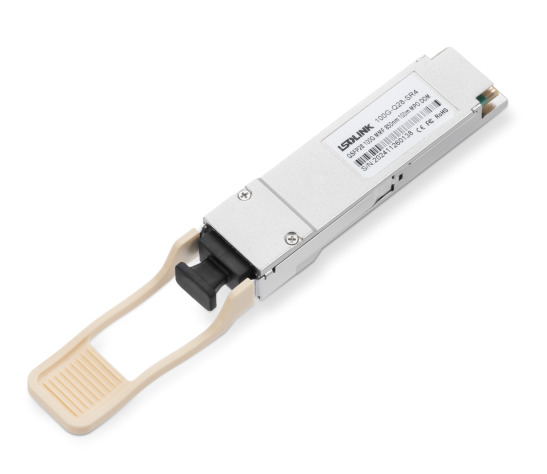
100G CWDM4 sfp module is the first choice for short- and medium-distance transmission, can provide 2 km transmission distance on SMF fibre, the most important feature is to provide 100G high bandwidth at a low cost,And it was used to be the first choice for short- and medium-distance transmission, and now, with the maturity of the process and the reduction of production costs, the cost and the 100G LR4 optical module can’t pull the gap too big, but it’s still a short- and medium-distance transmission Popular choice.
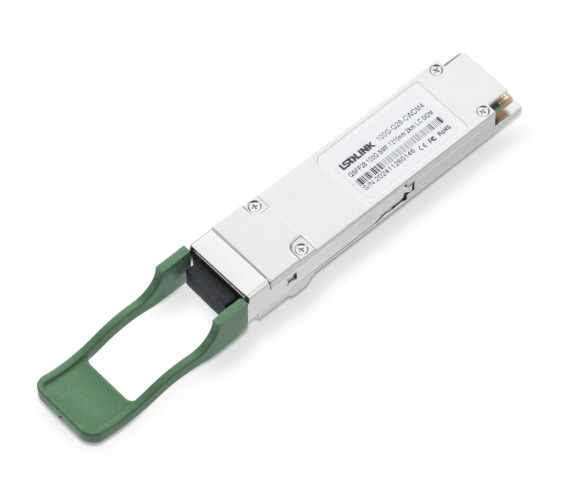
100G LR4 Optical Module, the first choice for single mode short and medium distance, can provide 10km transmission distance on SMF fibre, with low power consumption, long distance and low cost, suitable for short and medium distance connection between data centres, and also can be used in enterprise network for campus-to-campus backbone network connection.

100G DR optical module, the most commonly used single-channel module, can provide 500m transmission distance on SMF fibre.DR module adopts single-channel PAM4 modulation, the power consumption is higher than that of four-channel NRZ modulation, and it requires the equipment to support PAM4 modulation, so it is seldom seen in the office and telecom network, the most important application scenario is the data centre network, and the 400G The main application scenario is data centre network, connecting with 400G DR4 module to provide data centre with smooth upgrade from 100G to 400G, reducing the upgrade waiting time and equipment cost.
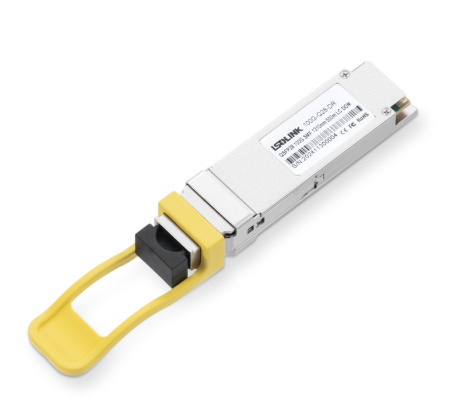
How is the AI Market Driving Demand for 100G QSFP28 Optical Modules?
The Challenges of AI for HPC Data Centre
In the data centre, GPU/TPU cluster training AI model will generate massive data interaction, these data will cause a lot of pressure on the data centre network and cause network congestion, reducing the efficiency of model training.The network delay is also very sensitive when AI model was training and use, such as those real-time reasoning scenarios, the network’s high latency will give customers a bad experience, resulting in customer resistance; there is also AI self-driving, the delay in the network will cause a delay in the execution of the command, which is a serious threat to the lives of the passengers and pedestrians, which has prompted the data centre to move towards a higher-speed, lower latency The road to higher speeds and lower latency.
100G QSFP28 Optical Module Adaptability for Data Centre Upgrade
100G QSFP28 optical module to help upgrade the data centre,but the upgrade of the data centre is not so easy. Each data centre has invested a huge fixed cost, the switch head can not be changed, can only be gradually upgraded and replaced.At this time, the advantages of 100G QSFP28 optical modules can be reflected, 4 times the bandwidth of 25G, the ultra-low loss of fibre optic transmission, can meet the initial requirements of high-performance data centre. When upgrading the old network, four 25G can be connected to a 100G QSFP28 optical module , which can be upgraded to 100G bandwidth under the condition of retaining the old equipment. All the services of the data centre can be upgraded to 100G bandwidth through gradual upgrading.
100G QSFP28 Single-Channel Module Facilitates Smooth Upgrade of Data Centers
Although 100G bandwidth is substantial and can generally meet the needs of data centers, AI technology is continuously evolving. The growth of computing power requires increasingly higher bandwidth to cope with demands. For top-tier high-performance data centers, 100G bandwidth can no longer satisfy their business requirements, and their focus has turned to 400G, which offers four times the bandwidth of 100G. However, the same challenge remains: the high fixed costs force data centers to upgrade gradually and replace equipment incrementally. This is where the 100G QSFP28 single-channel module comes into play. With a single-channel 100G rate and PAM4 modulation, it can directly connect to 400G four-channel modules. Data centers can thus complete the upgrade from a 100G network to a 400G network by only adding 400G devices based on existing network equipment, saving network upgrade costs and reducing business downtime during the transition. Below, we discuss the application of 100G QSFP28 single-mode modules in the smooth transition from 100G to 400G.
Core Scenarios for Data Center Upgrades: Smooth Transition from 100G to 400G
Upgrade Background
For top-tier data centers, traditional 100G networks struggle to keep up with the growth of AI computing power. However, directly upgrading to a 400G network brings unacceptable losses. In this case, a compromise is needed: gradual upgrades and equipment replacement, which can reduce upgrade waiting time, cut costs, and ensure upgrade continuity—making the transition from 100G to 400G networks sufficiently smooth.
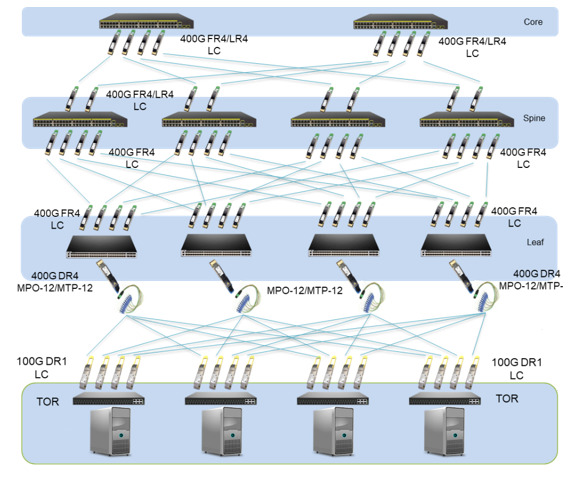
Take the 100G DR optical module as an example. The 100G DR optical module and 400G DR4 optical module are the most commonly used combinations for 100G data center upgrades. The 100G QSFP28 DR optical module can achieve a transmission distance of up to 500m over single-mode fiber (SMF), complying with the IEEE 802.3u 100GE DR1 MSA standard. It can convert 4 channels of 25Gbit/s NRZ electrical data into 1 channel of 106.25Gbit/s PAM4 optical signals. Similarly, at the receiving end, it can convert 1 channel of 106.25Gbit/s optical signals into 4 channels of output electrical signals. The optical transmitting and receiving units are reduced from 4 to 1, effectively lowering the optical complexity inside the optical module. Due to the reduction in the number of components, the cost is significantly reduced (optical components account for approximately 60% of the entire optical module cost).

Key Role and Technical Principles of 100G QSFP28 Single-Channel Module
The 400G QSFP-DD DR4 optical module converts 8 channels of 50Gb/s electrical signals into 4 channels of 106.25Gbit/s PAM4 optical signals. It complies with IEEE 802.3bs, QSFP-DD CMIS Rev 4.0 specifications, and RoHS standards, with a maximum power consumption of 12W. Through the MPO-12 connector, it can achieve a transmission distance of up to 500m over single-mode fiber (SMF), basically meeting the basic distance requirements for intra-data center interconnection.
During connection, four 100G QSFP28 DR modules are simultaneously connected to one 400G QSFP-DD DR4 module. Each 100G QSFP28 DR module corresponds to a transceiver channel of the 400G QSFP-DD DR4, converging four 100G services into one 400G service for transmission. This upgrades the 100G network to 400G while retaining compatibility with original 100G equipment. It allows gradual replacement of old modules in the later stage, reducing the risk of one-time investment. When all old modules are replaced with new ones, the data center completes the upgrade.
Summary of Advantages of 100G QSFP28 Single-Channel Module
The most significant advantage of the 100G QSFP28 single-channel module lies in cost savings. It enables phased deployment to ensure business continuity and reduce the risk of downtime—critical factors for data center operation and maintenance. After all, the stability of a data center takes precedence over all else, with data security being of paramount importance.
Future Outlook: Long-Term Value of 100G QSFP28 Optical Modules
Technical Vitality of 100G QSFP28 Optical Modules
Although 100G QSFP28 optical modules have stepped down from their mainstream position in large-scale data centers—where 400G or even 800G optical modules now dominate—they still hold an irreplaceable role in small and medium-sized data centers and edge computing scenarios. Leveraging their low power consumption, low cost, low latency, high bandwidth, and easy maintenance characteristics, these modules retain strong vitality as long as small and medium-sized data centers remain in operation. Furthermore, 100G QSFP28 optical modules serve as the backbone of metropolitan area networks (MAN) and enterprise networks, and they will continue to play a vital role alongside us in the future.
Industry Development Trends of 100G Optical Modules
Regardless of the transmission rate, optical modules are ultimately evolving toward higher speeds, lower power consumption, and smaller form factors. 100G optical modules have already adopted the SFP-DD package, which reduces the volume by half compared to the QSFP28 package. This allows more modules to be accommodated in the same 1U space, enabling a higher cabling density. However, despite technological advancements, 100G remains a “golden transition node” and will continue to hold a significant position in the future market.
FAQ
Q: Can all 100G QSFP28 optical modules be connected with 25G optical modules?
A: Only 100G QSFP28 SR4 and 100G QSFP28 PLR4 optical modules can be connected with 25G optical modules.
Q: Can all 100G QSFP28 optical modules be connected with 400G optical modules?
A: Only three single-wave modules, 100G-Q28-DR, 100G-Q28-FR and 100G-Q28-LR, can be connected with 400G optical modules.
Q: The 100G LR4 optical module is a four-channel one, why is it LC interface, and it doesn’t support connecting 25G optical module?
A: 100G LR4 optical module carries out WDM at TX and demultiplexing at RX, so that it can use duplex LC optical fibre for transmission and save optical fibre resources. Again, because of WDM, it can’t be split to 25G rate and connected to 25G module.
Q: Can 100G LR4 optical module be connected with 100G LR optical module?
A: 100G LR4 optical module can not be connected with 100G LR optical module, 100G LR4 optical module is NRZ modulation, 100G LR optical module is PAM4 modulation, the data modulation of the two modules is not the same, and the signals sent by the other side can not be parsed and recognised.
Q: My switch only supports NRZ modulation, can I use 100G LR optical module?
A: 100G LR optical module can not be used in the switch that only supports NRZ modulation, the switch can not recognise the PAM4 signal transmitted by 100G LR optical module.
In This Article
- 1 Introduction: 100G QSFP28 Optical Module – ‘Invisible Courier’ in the Data World
- 2 What is 100G QSFP28 Optical Module?
- 3 How is the AI Market Driving Demand for 100G QSFP28 Optical Modules?
- 4 Core Scenarios for Data Center Upgrades: Smooth Transition from 100G to 400G
- 5 Future Outlook: Long-Term Value of 100G QSFP28 Optical Modules
- 6 FAQ
Show All
Collapse




